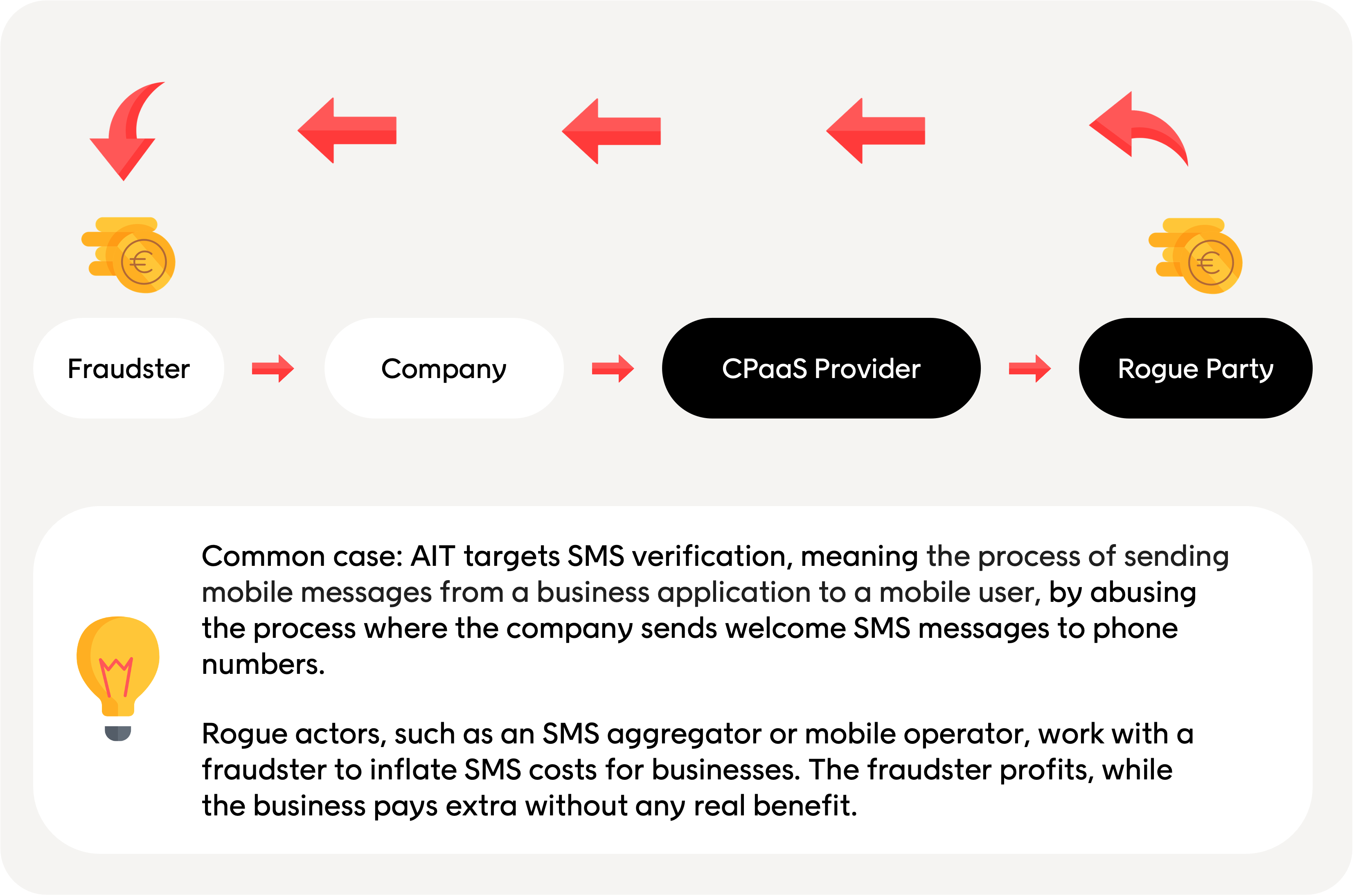Understanding your customers is key to delivering great experiences. With Voyado’s SMS marketing for retail, you gain detailed insights into every message — from unsubscribe activity to delivery rates and bounces — enabling you to fine-tune your campaigns for even better performance.
However, while optimizing your SMS efforts, it’s equally important to stay informed about how fraud can take shape and potentially harm your business. By taking a few simple security measures, you can ensure continued security and smooth operations. To support you, we have collected some information and practical steps on how to enhance your protection against one type of fraud: Artificial Inflation of Traffic (AIT).
What is Artificial Inflation of Traffic (AIT)?
AIT is a form of SMS fraud that creates high volumes of fake traffic through mobile apps or websites. As the owner of the application, you might end up covering the costs for messages that were sent. Fraudsters often target long-distance destinations, as international messages with higher delivery fees generate more profit.
To illustrate a common AIT scenario, we’ve provided an example below:

A common AIT scenario typically involves:
- A fraudster creates a bot to make fake contacts.
- The company sends welcome SMS messages to phone numbers.
- The fraudster collaborates with a rogue party to intercept these messages without delivering them.
- They claim the revenue and share the profits.
- They repeat the process to boost revenue or manipulate conversion data.
How does Voyado work to address AIT, and what measures has been implemented?
Voyado continuously monitors emerging fraud schemes and actively works to minimize the risk of our customers being exposed to them. While fraudsters may not be directly targeting Voyado, we have implemented a variety of internal and external measures to protect our customers from AIT fraud. So has our Communication Partners, who’s also working actively to ensure our joint customers remain in safe hands. Listed below are some of the measures we have implemented:
- Block high-risk countries/operators with low volume through our suppliers.
- Monitor when or if contact creation in a specific tenant deviate from normal patterns, and if it does, notify the customer. This monitoring is done daily.
- Implemented an allowlist configuration for mobile phone country codes when new contacts are attempted to be created in registration forms.
- Introduced a ‘Contact limit’ in the automation flow.
In addition to these measures, the situation is continuously and carefully assessed for further security actions in the event of an increased threat.
What are the best practices for me as a retailer?
Start by identifying all the potential entry points that malicious entities could exploit, including custom-built forms, API integrations, and third-party tools used for data collection. Once you’ve completed this mapping, there are a few simple security measures you, as a retailer, can take.
-
Implement validation mechanisms and double opt-in processes – increases the chances that only interested customers receive marketing information
Secure all your identified entry points with a control layer, such as CAPTCHA or other validation mechanisms. A double opt-in is the process whereby a contact confirms their sign-up for marketing communication.
-
Allowlist – reduce the likelihood of sending SMS to erroneous or international numbers
In our product Engage, you can implement an allowlist on registration forms to validate phone numbers based on specified country codes. This will reduce the likelihood of sending SMS to erroneous or international numbers. You can also use segmentation in automation processes to target specific audiences, which minimizes the risk of unnecessary SMS dispatches.
-
Contact limit – control the number of emails and text messages
With the Contact limit split function in Engage, you can take and keep control of the number of emails, text messages, and other activities within your automation flows. It allows you to control how many contacts proceed down a specific branch to receive messages like emails or SMS. You can set a maximum number of contacts and choose whether this limit applies daily, monthly, or without a time restriction.
-
Company insurance – protect your business if it occurs
A company insurance policy often includes coverage for financial losses, helping to safeguard your business and mitigate the financial impact of fraud-related incidents – if it occurs.
By sticking to these best practices and staying vigilant about potential security threats, you can maintain the integrity of your contact database while also delivering great customer experiences. Proactive measures, combined with continuous monitoring and adaptation, are key to mitigating risks and ensuring a secure onboarding and contact creation process.
If you want to read more about how you can deliver tailored experiences effortlessly with our SMS solution – check out the link below.









